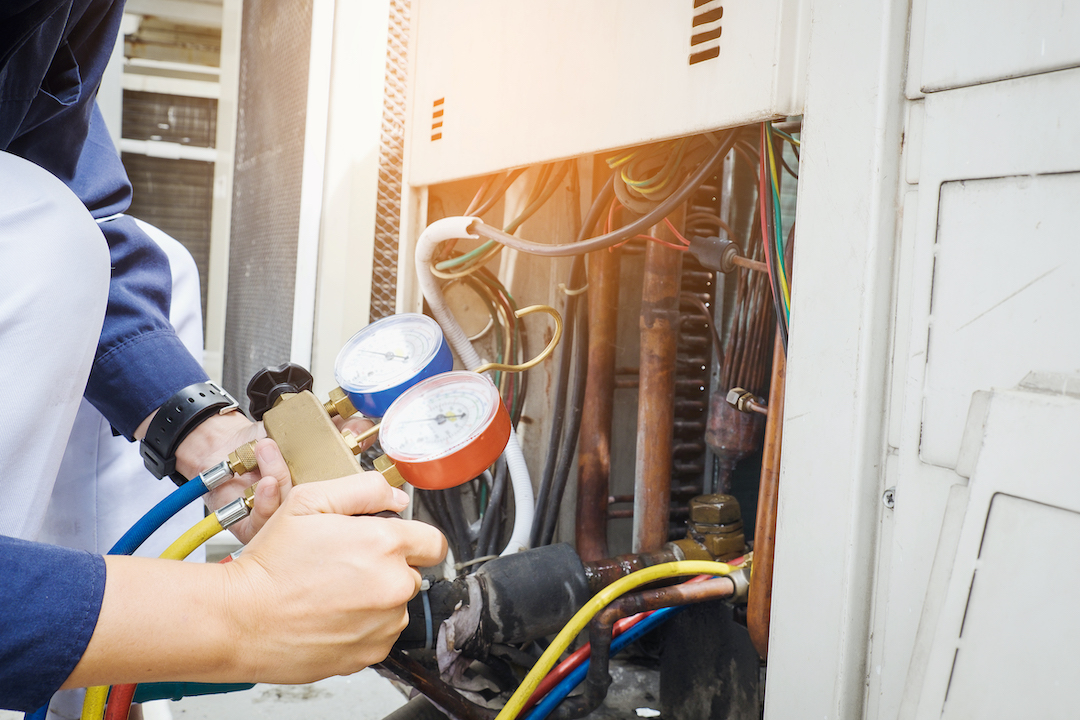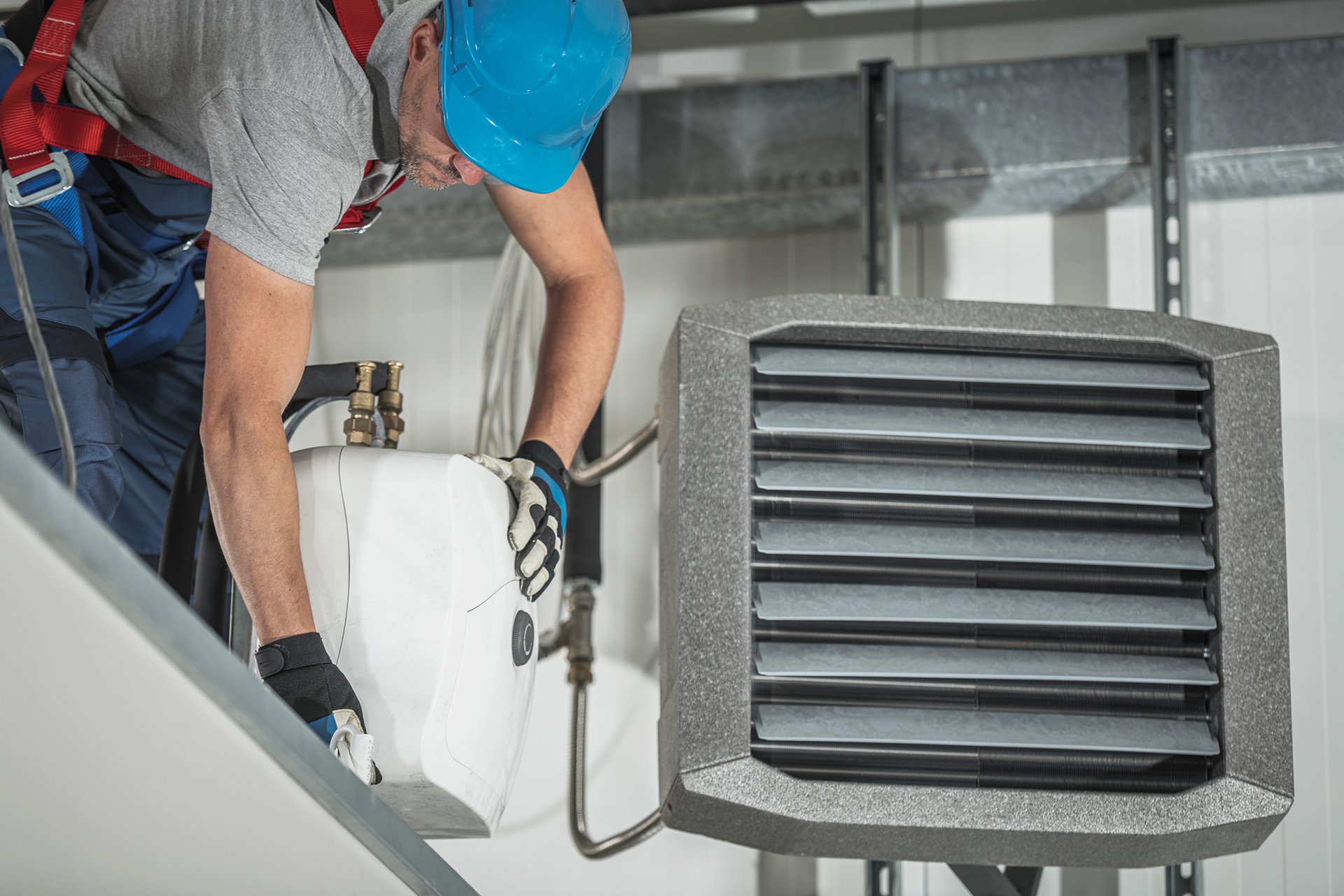The Ultimate Breakdown of ductless mini splits vs Central Heating Systems
The Ultimate Breakdown of ductless mini splits vs Central Heating Systems
Blog Article
How a Heatpump and Furnace Interact to Maximize Your Home's Heating Efficiency
Recognizing exactly how a heat pump and furnace collaborate is crucial for property owners looking for effective heating services. Each system has its toughness, supplying a balanced approach to home comfort. The warmth pump masters modest temperatures, while the heater provides fast warmth throughout severe cold. This synergy not only lowers power prices but also enhances the lifespan of both appliances. What aspects influence this collaboration, and how can homeowners optimize their advantages?
Recognizing Heat Pumps: Just How They Work
Although lots of people may be strange with their inner workings, heat pumps play a crucial role in modern heating unit. These tools run by moving heat from one location to one more, utilizing the principles of thermodynamics. In cooler months, a heat pump removes warm from the outside air, ground, or water, and transfers it inside to warm the home. Alternatively, during warmer months, it can reverse the process, functioning as an air conditioning unit by getting rid of warmth from inside to the outside.Heat pumps consist of an evaporator, compressor, condenser, and expansion valve. The refrigerant within the system absorbs warmth as it evaporates at low temperatures and pressures. The compressor then increases the stress and temperature level of the cooling agent, enabling it to release warm as it condenses. This effective process can substantially decrease power intake contrasted to typical home heating techniques, making heat pumps a lasting choice for environment control in homes.
The Role of Heaters in Home Heating
Furnaces play an important function in home heating by giving a reputable resource of heat throughout the cooler months. They operate by producing heat via combustion or electrical resistance, distributing it throughout the home via air ducts or glowing systems. The performance of a furnace is usually determined by its Yearly Gas Use Performance (AFUE) score, which shows exactly how properly the system converts fuel right into heat.Furnaces can make use of different energy resources, consisting of natural gas, electrical energy, propane, or oil, enabling home owners to choose one of the most suitable option for their requirements. Unlike heatpump, which might have a hard time in extreme cool, heaters maintain constant performance, guaranteeing that interior temperatures stay comfortable despite outside conditions. Additionally, contemporary heaters often come geared up with innovative technology, such as variable-speed blowers and clever thermostats, boosting their performance and responsiveness. This flexibility makes heaters a crucial part in all-inclusive home heating approaches.

Benefits of Using Both Systems With Each Other
Combining the toughness of both furnaces and warm pumps can result in a more efficient and efficient home heating option. Making use of both systems permits house owners to take benefit of the heatpump's energy effectiveness throughout milder temperatures while counting on the heating system for even more severe cold conditions. This double method can greatly lower energy expenses, as heatpump take in less power than conventional heating approaches when temperatures are moderate.Additionally, using both systems with each other can boost comfort levels in the home. Heatpump can provide regular, also heating, while heaters can quickly raise ambient temperature levels when required. The integration of both systems can prolong the lifespan of equipment by decreasing wear and tear on each unit, as they share the work. Ultimately, property owners can enjoy a balanced, cost-efficient heating solution that readjusts seamlessly to differing weather problems, making certain a cozy and inviting home throughout the winter season.
Just How Warm Pumps and Furnaces Enhance Each Various Other
When home owners integrate heat pumps and heaters, they develop a corresponding furnace that optimizes efficiency and comfort. Heatpump operate by moving warmth from the outside air or ground, making them extremely effective in modest climates. They succeed during milder temperature levels, giving cost-efficient home heating. On the other hand, heaters generate warm via combustion or electrical resistance, delivering solid, instant warmth during severe cold conditions.The mix of these 2 systems permits vibrant modifications based upon temperature changes. During warmer months or milder wintertime days, the heatpump can take the lead, preserving energy and minimizing expenses. As temperatures decline, the furnace can seamlessly involve, ensuring consistent heat throughout the home. This synergy not just maximizes energy use however likewise enhances the life-span of both systems, as each unit operates within its perfect efficiency array. With each other, they develop a balanced environment that adjusts to differing climate needs.
Maximizing Efficiency: Tips for Homeowners
Home owners can improve their heating efficiency through numerous useful strategies. Establishing a normal upkeep routine, incorporating smart thermostat technology, and implementing efficient insulation and securing remedies are essential actions. These steps not just boost convenience but likewise reduce power costs.
Routine Upkeep Arrange
To assure optimal home heating effectiveness, developing a routine maintenance timetable is vital for any kind of home. Home owners need to prioritize regular inspections of both warm pumps and furnaces to identify peak performance. This includes altering air filters each to three months, as clogged up filters can greatly minimize efficiency. Additionally, scheduling expert upkeep a minimum of yearly enables specialists to identify and address prospective problems prior to they escalate. Property owners ought to likewise cleanse the heatpump's exterior device to avoid debris accumulation that can impede air movement. By sticking to a regular upkeep schedule, homeowners not only enhance their heater' performance but likewise expand their life expectancy, bring about better his response comfort and reduced energy costs throughout the chillier months.
Smart Thermostat Assimilation
Integrating a smart thermostat into a home heating unit can significantly enhance power effectiveness, especially as it permits exact control over temperature settings. These gadgets can discover the homeowner's schedule and preferences, immediately adjusting the temperature to maximize convenience while minimizing power usage. They can decrease heating during times when the home is unoccupied, minimizing unneeded intake. Numerous wise thermostats also give real-time power usage information, making it possible for homeowners to make enlightened decisions regarding their home heating behaviors. In addition, remote accessibility by means of smart device apps permits users to change setups from anywhere, making certain the home is cozy upon return. On the whole, smart thermostat integration not just boosts comfort yet significantly contributes to energy savings and efficiency.
Insulation and Securing Solutions
Smart thermostats play a crucial function in power performance, yet their efficiency can be greatly improved by appropriate insulation and sealing solutions. House owners must prioritize protecting floorings, attics, and walls to decrease warmth loss. Top quality insulation products, such as spray foam or fiberglass, can considerably enhance thermal resistance. In addition, sealing voids around doors, ducts, and windows protects against chilly air infiltration and warmth retreat. Weatherstripping and caulking work methods for attending to these leakages - heat pump service. Regular assessments for air leakages, in addition to making use of blower door tests, can help identify issue locations. By buying insulation and sealing, property owners can maximize the efficiency of their heating unit, ultimately bring about lowered power intake and lower energy costs
Usual Myths Concerning Warmth Pumps and Furnaces
What misunderstandings border warmth pumps and furnaces? Numerous people erroneously believe that heatpump are inadequate in chillier climates. In truth, contemporary heat pumps are designed to run effectively also in low temperature levels, supplying trusted heating throughout winter season. Another usual myth is that heaters are constantly much more reliable than warm pumps. This depends on the particular power sources and performance scores of the units in concern. Some might additionally think that making use of both systems all at once is unnecessary, however as a matter of fact, this mix can optimize heating performance, specifically during severe climate condition. Furthermore, people often think that heat pumps call for continuous upkeep, when in reality, they have similar upkeep requires to traditional furnace. By debunking these myths, home owners can make even more educated decisions regarding their home heating choices, ultimately bring about boosted convenience and energy efficiency in their homes.
Upkeep Factors To Consider for Combined Solutions

Often Asked Inquiries
Can Heat Pumps Job Efficiently in Exceptionally Cold Climates?
Heatpump can have a hard time in exceptionally chilly climates because of minimized performance and heat extraction constraints. Improvements in modern technology have actually led to versions made for much better efficiency in such problems, boosting their viability in harsh environments.
For How Long Do Warm Pumps and Furnaces Usually Last?
Heatpump usually last 15 to twenty years, while furnaces have a lifespan of 15 to three decades. Regular upkeep can expand their long life, making sure effective procedure and minimizing the requirement for premature replacements.

What Is the Ordinary Expense of Installing Both Solutions?
The average cost of installing both a heatpump and a furnace typically varies between $5,000 to $10,000 - heat pump replacement ooltewah tn. Elements affecting this cost consist of system dimension, setup intricacy, and regional labor rates
Exist Tax Obligation Rewards for Using Energy-Efficient Home Heating Equipments?
Many home owners ask about tax obligation motivations for energy-efficient heating unit. Different government and state programs often provide credit reports or discounts, motivating the fostering of sustainable innovations to lower energy usage and advertise ecological duty.
How Do I Select the Right Dimension Warmth Pump and Heater?
Choosing the right dimension heatpump and heater entails computing the home's square video footage, thinking about insulation high quality, and evaluating regional environment. Consulting a specialist can guarantee excellent system performance and power performance based upon details demands. heat pump service. Comprehending exactly how a heat pump and furnace work together is necessary for house owners seeking efficient heating options. In chillier months, a warm pump extracts warmth from the outside air, ground, or water, and transfers it indoors to warm the living room. When house owners integrate warmth pumps and heaters, they develop a corresponding heating system that optimizes effectiveness and comfort. Heat pumps run by transferring heat from the outside air or ground, making them highly effective in modest environments. Warm pumps can have a hard time in exceptionally chilly climates due to lowered efficiency and heat removal constraints
Report this page